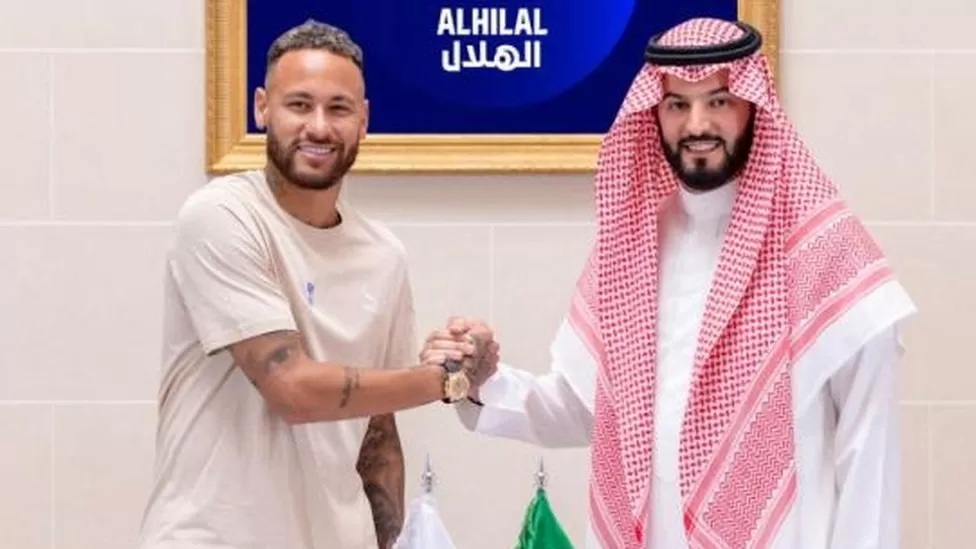Saudi Arabia’s multi-billion dollar football powerhouse bet

The unveiling of Neymar Junior in front of more than 65,000 ecstatic fans on 19 August 2023 marked the beginning of a new era for the club despite its impressive history.
As the Brazilian forward walked onto the pitch wearing the traditional dark blue kit, a volley of fireworks and a drone show lit up Riyadh’s sky.
I think the whole of Brazil will support us now. The club will be known everywhere,” Al Hilal fan Abdullah Almutawa told the who attended the ceremony.
As part of the ambitious project to make Saudi Arabia an international football hub, Cristiano Ronaldo joined Al Nassr in January on a two-and-a-half-year deal worth over $400m (£318m or 370m euros) in wages.
As a result, the Saudi league acquired some of the biggest names in the sport during the summer transfer window. From Real Madrid, Karim Benzema moved to Jeddah-based Al Ittihad in June.
Many prominent players have switched to the Saudi Pro League since then, including Sadio Mane, Riyad Mahrez, Jordan Henderson, and N’Golo Kante.
The Saudi Pro League spent more than $850m on transfer fees during the summer, making it the second-highest spender after the English Premier League. There is no mention of the eye-watering salaries offered to lure players from top European leagues.
Carlo Nohra, the league’s chief financial officer, says this is not a one-time expenditure. The Saudi Arabian government has committed to financially supporting the league until it achieves its goal of becoming one of the top leagues in the world.
Saudi Pro League aims to compete with English Premier League and La Liga.
Nohra says they will continue to spend big to attract foreign players until the league reaches its objective, but they are also working towards unlocking the league’s commercial potential.
While we have the commitment to getting support until whatever time it takes to achieve our goals, it is important for us to make ourselves commercially viable so that we are responsible for our own financial growth and not completely dependent on government capital,” Mr Nohra told .
Saudi Arabia’s strategy is not only about managing its image and reputation, according to some experts. “Nations across the world used sports and entertainment to project soft power,” says Simon Chadwick, professor of Sport and Geopolitical Economy at Skema Business School in Paris.
“It’s part of Saudi Arabia’s current policy arsenal. It’s a contest between nations to win people’s hearts and minds worldwide. Several countries have implemented this policy, including Britain, the United States, France, India, and others. Saudi Arabia is now following suit,” Prof Chadwick adds.
Second, Saudi Arabia’s spending spree is part of a broader effort to reinvent its economy before oil revenues begin to decline. They account for more than 40% of Saudi Arabia’s gross domestic product.
A major pillar of Crown Prince Mohammed bin Salman’s Vision 2030 project is sports. By building new industries and creating jobs, the economic diversification program aims to reduce the country’s reliance on fossil fuels.
According to Mr Nohra, one of the goals is to provide entertainment for the Saudi population as part of Vision 2030, as well as to develop local talent that would enhance the league’s level in the long run.
80% of Saudi Arabia’s population plays, watches, or follows football. Whether these bold investments will pay off is still to be seen, but they demonstrate the Gulf nation’s desire to become a world power in football.
